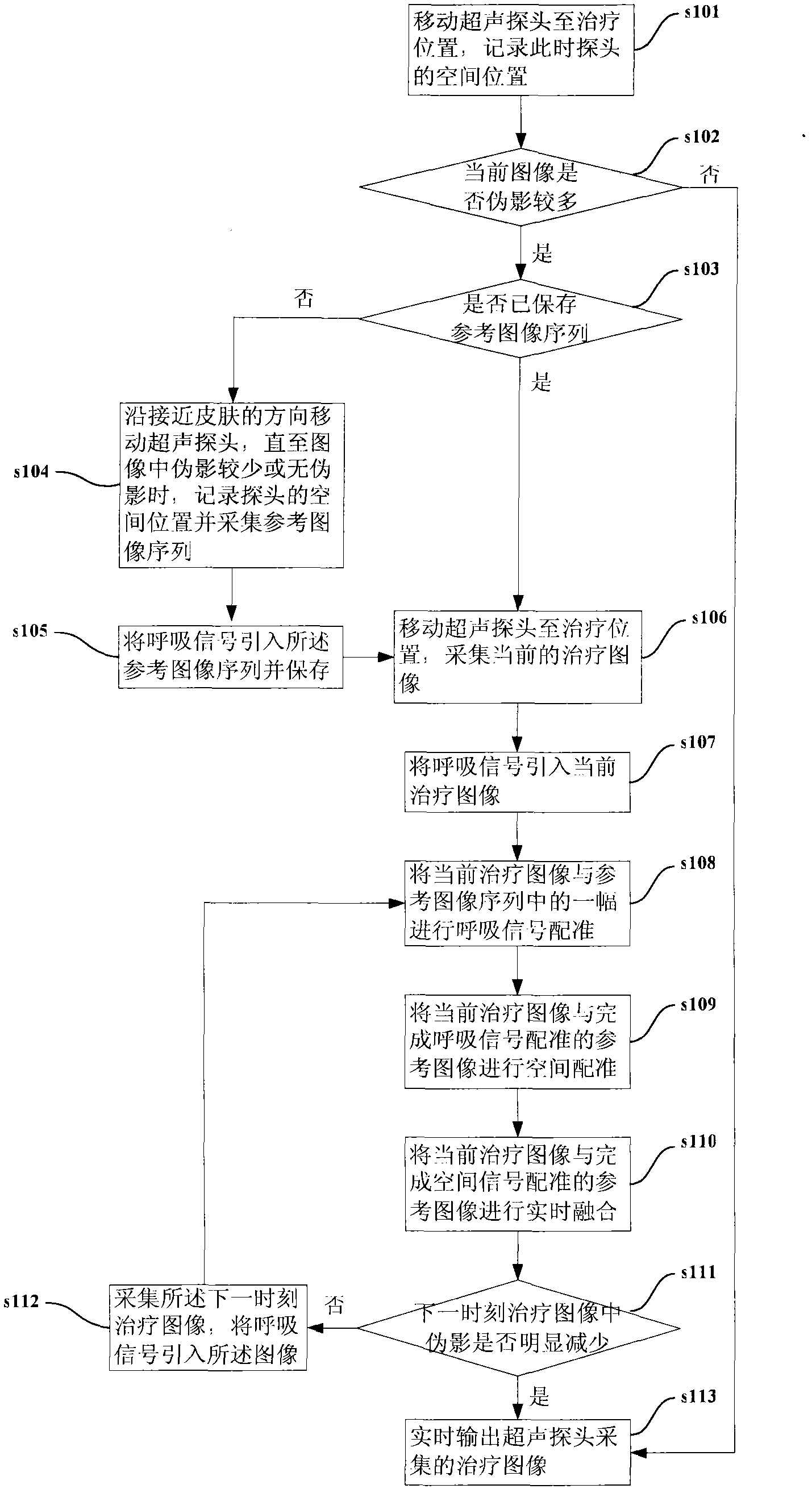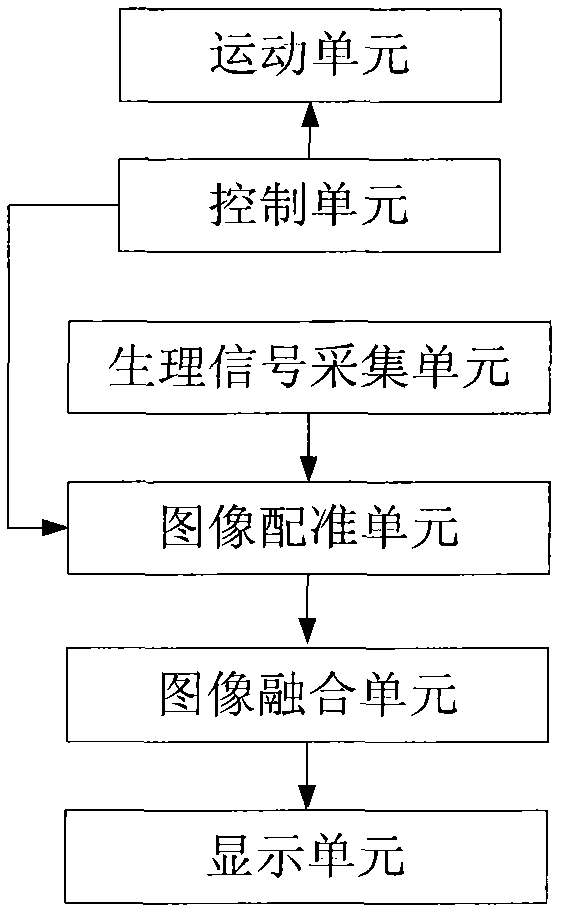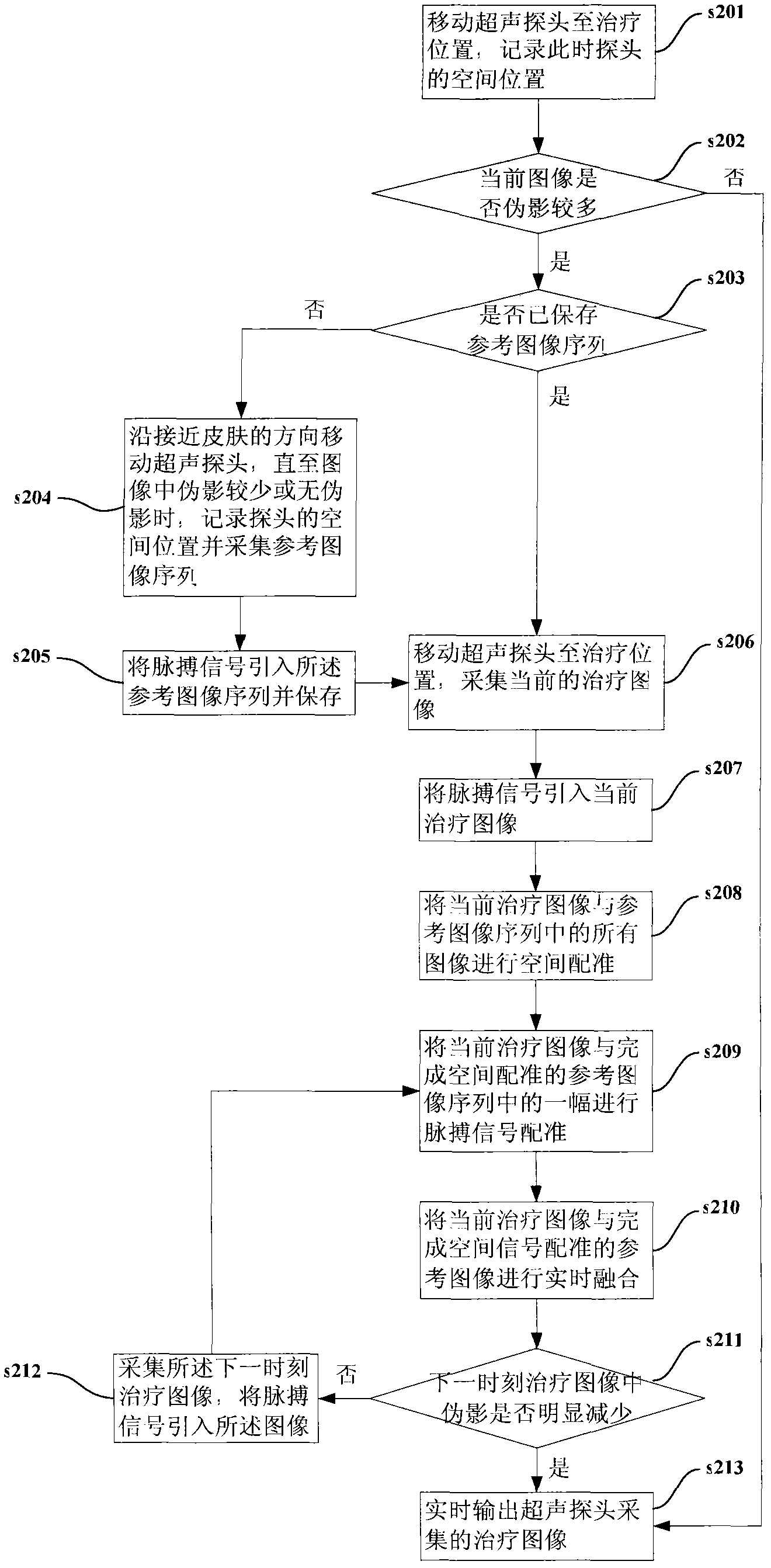Method and device for reducing artifacts in image in real time
An image-in-image technology, applied in the field of image processing, can solve problems such as limiting the scope and population of diseases treated by the HIFU treatment system, the inability to treat tumors, and increasing the risk of HIFU treatment.
- Summary
- Abstract
- Description
- Claims
- Application Information
AI Technical Summary
Problems solved by technology
Method used
Image
Examples
Embodiment 1
[0067] In this embodiment, the method for reducing artifacts in an image in real time includes:
[0068] 1) Acquisition of reference images:
[0069] Move the ultrasonic probe to a position suitable for treatment and collect images of the current lesion. The treatment position means that when the ultrasonic probe is at this position, the operator can observe the ultrasonic image of the area to be treated in real time, and requires the treatment head to focus In the treatment area, record the spatial position of the ultrasonic probe at the treatment position at the same time, first judge whether there are many artifacts in the image of the lesion collected by the ultrasonic probe at the treatment position, if there are many artifacts, then according to the ultrasound In the image collected by the probe, the position of the skin line (the surface of the human skin appears as a curve on the section plane of the ultrasound image, and the curve is the skin line) moves the ultrasoun...
Embodiment 2
[0128] According to the patient's lesion being affected by respiration and / or heartbeat, when the lesion is greatly affected by heartbeat, the one physiological signal cycle is one heartbeat signal cycle. In this embodiment, the patient's lesions are greatly affected by the heartbeat. Since the frequency of the human body's heartbeat is the same as the pulse, the pulse cycle can also be equivalent to the heartbeat cycle. Therefore, several groups of image sequences of several continuous pulse signal cycles are collected. One is used as a reference image sequence. Such as image 3 As shown, the specific steps of the method for reducing artifacts in an image in real time are as follows:
[0129] s201. Move the ultrasound probe to the treatment position and collect images of the current lesion, and record the spatial position of the ultrasound probe at this time;
[0130] s202. Judging whether there are many artifacts in the treatment image collected by the current ultrasonic p...
Embodiment 3
[0144] According to the influence of respiration and / or heartbeat on the focus of the patient, when the focus is affected by respiration and heartbeat at the same time, and the degree of influence is relatively large, the time between the respiration signal period and the heartbeat signal period is used for the one physiological signal period. longer period. In this embodiment, the patient's lesions are affected by breathing and heartbeat at the same time, and the degree of influence is relatively large. Since the time of a breathing signal cycle is longer than that of a heartbeat signal cycle, a breathing signal cycle is used as a physiological signal cycle. , that is, to collect several groups of image sequences of several consecutive respiratory signal periods, and select one of them as a reference image sequence.
[0145] The method for reducing artifacts in images in real time and the device for reducing artifacts in images in real time proposed in this embodiment are the...
PUM
 Login to View More
Login to View More Abstract
Description
Claims
Application Information
 Login to View More
Login to View More - R&D
- Intellectual Property
- Life Sciences
- Materials
- Tech Scout
- Unparalleled Data Quality
- Higher Quality Content
- 60% Fewer Hallucinations
Browse by: Latest US Patents, China's latest patents, Technical Efficacy Thesaurus, Application Domain, Technology Topic, Popular Technical Reports.
© 2025 PatSnap. All rights reserved.Legal|Privacy policy|Modern Slavery Act Transparency Statement|Sitemap|About US| Contact US: help@patsnap.com



